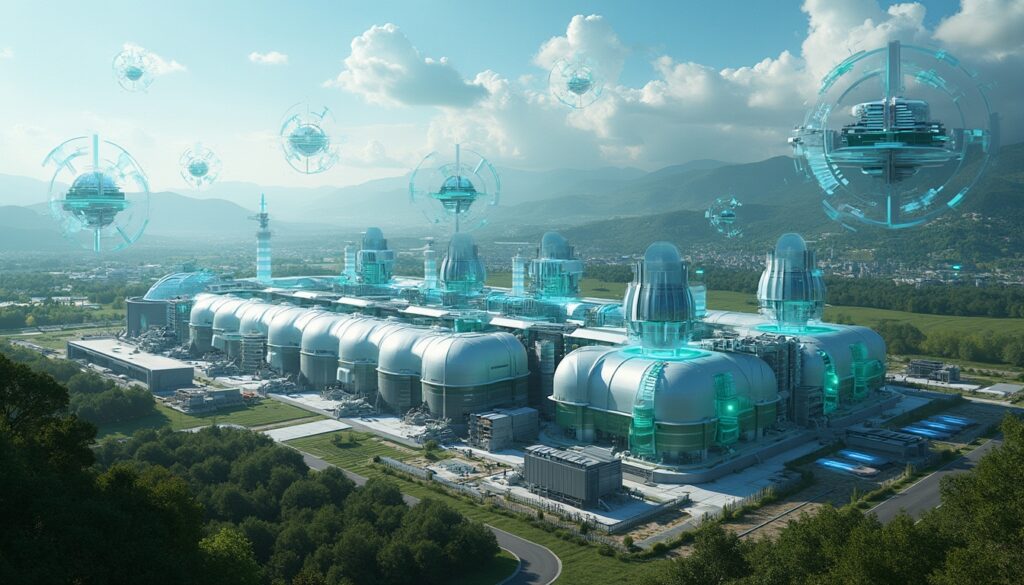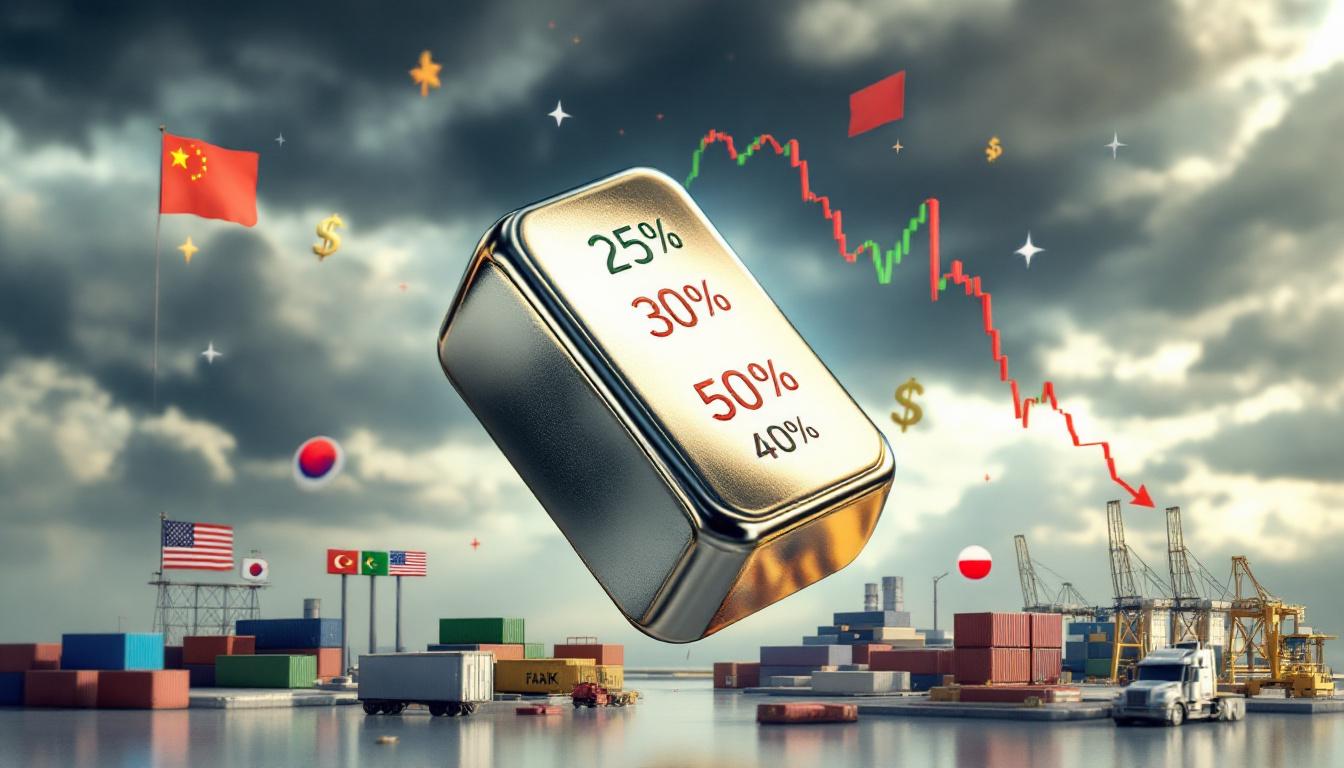The Georges Besse 2 uranium enrichment plant represents one of Europe's most critical nuclear infrastructure facilities. EIB Orano Georges Besse 2 Uranium plays a key part in enhancing European energy security. Located at the Tricastin site in southeastern France, the state-of-the-art plant is operated by Orano, a global leader in nuclear fuel cycle services.
The facility uses advanced centrifuge technology, replacing the former gaseous diffusion method. This innovation ensures enhanced efficiency and a reduced environmental impact. The plant consists of 14 operational modules that work together to separate uranium isotopes naturally.
Across Europe, nuclear energy is vital for achieving low-carbon electricity. The project benefits the continent by providing a reliable domestic source of enriched uranium. This approach reduces the European Union's vulnerabilities to supply disruptions and geopolitical tensions. It also complements renewable energy sources for a balanced energy mix.
What Is the Role of the Expansion?
The expansion project will add four new modules to Georges Besse 2, increasing capacity by 30%. This additional capacity translates to an extra 2.5 million separative work units (SWUs) annually. SWUs are standard measures for enrichment work and help determine how much uranium-235 is produced.
By expanding the plant, the project supports the broader European objective of reducing reliance on non-EU suppliers. This development forms part of a larger effort that includes a comprehensive guide to global uranium production and a cautious approach to nuclear fuel strategies.
The project uses a modular design to ensure a smooth scaling-up process. Each new module operates semi-independently, which minimises the risk of disrupting ongoing operations. This flexibility provides opportunities for continuous quality control throughout the expansion.
How Much Is Being Invested in This Project?
The European Investment Bank (EIB) has committed €400 million to the expansion. This investment represents nearly 23.5% of the total project cost. The remaining cost of approximately €1.3 billion will be financed by Orano. Overall, the project represents a comprehensive investment package of nearly €1.7 billion.
Significant financial support from the EIB underlines the strategic importance of this initiative. The investment, made as part of the Euratom Treaty framework, reinforces the project's commitment to reducing carbon emissions while enhancing energy security. As nuclear energy reduces dependency on fossil fuels, it plays a crucial role in the clean energy transition.
This expansion also creates opportunities for investors seeking strategic uranium investment opportunities. Capital markets continue to embrace projects that support energy autonomy and cleaner technologies.
An external report from NS Energy Business highlighted how the agreement has bolstered trust in European nuclear projects. You can learn more about similar funding details at nsenergybusiness for additional insights.
What Will the Expansion Include?
The expansion will introduce four additional enrichment modules. Each module increases the plant's production capabilities while maintaining quality and safety standards. The expanded design features a modular approach that allows phased implementation of capacity increases.
Key benefits of the project include:
- Enhanced safety features over older enrichment methods
- Competitive production costs for stable market pricing
- Improved energy efficiency, with centrifuges using 50 times less electricity
- A significantly reduced environmental footprint with lower carbon emissions
The modular design also allows for a steady integration with existing operations. Each module is tested individually, ensuring that overall plant safety is never compromised. Integrating newer technologies is critical for growth and innovation in nuclear enrichment.
The project further builds on examples from the mining’s crucial role in the clean energy transition, emphasising how modern methods support both efficiency and environmental commitments.
Why Is This Expansion Strategically Important?
Recent geopolitical events have underscored how vulnerable energy supplies can be. Following Russia’s invasion of Ukraine, EU leaders agreed on measures to reduce energy dependencies. Enhancing domestic uranium enrichment capacity is a major part of this strategy, ensuring that nuclear power remains secure and reliable.
The project reduces reliance on imported enrichment services, especially from Russian suppliers. This step is crucial as Russia's Rosatom once controlled nearly 35% of global enrichment capacity. A stronger domestic presence in enrichment will help counteract such disproportionate power.
In addition, the project helps the European Commission secure energy independence. It aligns with the objectives set out by the Euratom Treaty for enhanced supply chain resilience. By localising enrichment capabilities, the EU can control a critical component of its energy infrastructure more effectively.
Further reading on how projects tackle shortages can be found in addressing critical mineral shortages in the clean energy transition. Fostering strong local supply chains is key to a robust nuclear energy strategy.
What Is the Timeline for the Expansion?
The expansion process is managed through a carefully planned timeline. The project was formally notified on September 7, 2023, when Orano submitted its documentation under Article 41 of the Euratom Treaty. This step was critical in meeting regulatory requirements.
Shortly thereafter, the European Commission issued a favourable opinion on October 9, 2024. This approval followed extensive safety assessments and environmental impact studies. With these regulatory hurdles completed, detailed engineering phases are now in progress.
Construction is planned to begin in early 2025. Initial operations of the new modules are expected by 2028. The full commissioning of all 18 modules is projected for 2030. This phased approach minimises disruption and ensures safety at every step of the project.
Current industry news from Business Wire provides further context on similar approval timelines. In-depth details can be read at businesswire for those interested in regulatory processes.
How Does the Project Benefit European Energy Security?
European energy security benefits substantially from the expansion of the Georges Besse 2 facility. An estimated 30% increase in domestic enrichment capacity reduces dependence on external sources. This change is especially significant given the previous reliance on Russian services.
Key advantages include:
- Increased supply stability for European utilities
- Reduced price volatility in the uranium enrichment market
- Enhanced control over the nuclear fuel supply chain
- Greater leverage in negotiating terms with external suppliers
The expanded facility will power approximately 120 million European households with low-carbon electricity. This is a significant contribution to sustaining energy supply during geopolitical uncertainties. It reflects the importance of ensuring domestic production remains at the heart of energy policy.
Such measures are critical when adjusting strategies for long-term energy independence. This strategy also aligns with broader goals outlined in a mongolia orano uranium project. By diversifying supply and production capabilities, the EU reinforces its energy security framework.
What Technology Is Used at Georges Besse 2?
Georges Besse 2 uses high-speed gas centrifuge technology for uranium enrichment. This technology marks a significant advance from the older gaseous diffusion methods. Centrifuges separate uranium isotopes by spinning uranium hexafluoride gas at extremely high speeds.
Advantages of this advanced technology include:
- Remarkable energy efficiency, with substantially lower electricity use
- Scalability through a modular design allowing phased capacity increases
- Reduced environmental impacts due to lower carbon emissions
- Enhanced operational safety from multiple redundant systems
The technology integrates well with modern computerised control systems to ensure quality control and process integrity. Regular monitoring ensures that enrichment levels are within strict safety limits set by international standards.
This technical advancement is part of an industry-wide push towards cleaner energy production. It is pivotal for meeting both market demands and environmental commitments, contributing to the overall low-carbon objectives of European energy policies.
How Does the Expansion Fit Into Orano's Global Strategy?
This expansion is a cornerstone in Orano's strategy to secure a global nuclear fuel cycle. The project not only boosts European enrichment capacity but also cements Orano's leadership in the nuclear sector. Investments in both mining and enrichment create a vertically integrated model that is more resilient and efficient.
Earlier in 2024, Orano entered a notable deal with Mongolia's government. The resulting investment in nuclear infrastructure demonstrates the company's integrated approach to nuclear energy. Such projects illustrate how growth in one area supports overall market stability and supply security.
This strategic expansion is part of Orano's ambitions to drive sustainable energy. It aligns with plans highlighted in the strategic uranium investment opportunities discussion where low-carbon advances take centre stage. Investments today secure the technologies that will power tomorrow's reactors.
CEO Nicolas Maes has emphasised that these moves are vital for transitioning away from fossil fuels. He notes that expanding enrichment capacity now means significant environmental and economic benefits later. The strategic narrative is clear: embracing modern technology supports both growth and a cleaner energy future.
External expertise on strategic nuclear investments can be found at Power Technology. Their article on the EIB loan agreement offers additional industry insights. See power technology news for further reading on the subject.
FAQs About the Georges Besse 2 Uranium Plant
What is uranium enrichment and why is it important?
Uranium enrichment increases the concentration of uranium-235 from about 0.7% to levels needed for nuclear reactor fuel. Enrichment is vital for maintaining the nuclear chain reaction in most reactors. This process uses advanced centrifuge technology that efficiently separates isotopes. Without enrichment, the majority of nuclear reactors would not operate.
How does the Georges Besse 2 plant contribute to climate goals?
Nuclear power produces minimal greenhouse gas emissions during operation. The plant supplies enriched uranium for reactors that serve 120 million households with low-carbon electricity. This contribution helps displace higher-carbon alternatives such as coal and natural gas. The modern centrifuge technology further reduces the plant’s carbon footprint compared to older methods.
What safety measures are in place at the plant?
Safety protocols at Georges Besse 2 include multiple layers of protection. The design uses advanced centrifuges with fail-safe systems. Multiple containment barriers and continuous radiation monitoring ensure no release of radioactive material occurs. Strict inspections and emergency drills, overseen by both national and international bodies, keep safety standards high.
How does the expansion affect global uranium markets?
A 30% capacity increase strengthens the European position in global uranium markets. With more domestic production, Europe can reduce its dependence on imports from suppliers like Russia. This move creates a more balanced global enrichment landscape. In addition, stabilised market conditions make long-term project financing and contracting more attractive.
- The key benefits include improved supply stability
- Increased market competition and better pricing
- Enhanced negotiation power with external suppliers
By strengthening domestic capacity, the expansion ensures that the nuclear fuel chain remains robust amid global uncertainties.
Each of these measures demonstrates the project’s importance within the broader context of low-carbon, secure energy. Enhanced domestic production translates directly into a more reliable energy future across Europe. As global interest in nuclear technology renews, projects like these become central to achieving both environmental and energy security goals.
Want to Know When the Next Major Uranium Discovery Hits the Market?
Stay ahead of the market with Discovery Alert's proprietary Discovery IQ model, which delivers instant alerts on significant mineral discoveries across the ASX, including uranium opportunities like those discussed in this article. Visit the Discovery Alert discoveries page to see how early notification of major mineral finds can generate substantial returns for your investment portfolio.




